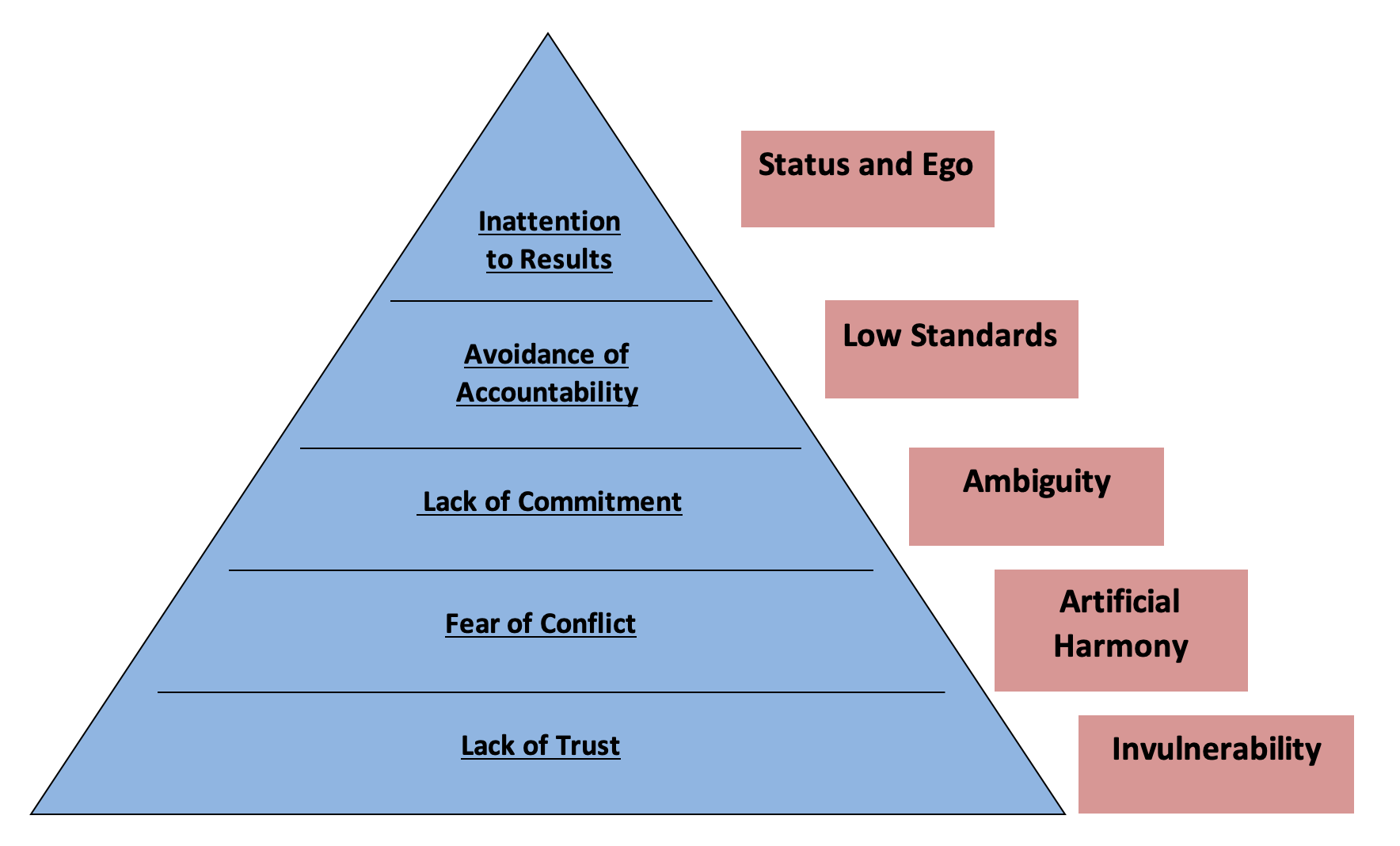The manager looked dejected and hopeless. From her point of view, she had tried repeatedly to help the person on her team be successful in her role. Yet, here was another email threatening to go to HR if she were not given more support and help from the manager.
The core problems that arise when managing people stem from two areas:
1) a lack of understanding of how to build healthy relationships and;
2) how to listen and respond.
I’m going to begin a series on what it takes to build a quality relationship, be it business or personal. I will focus on the business setting in my illustrations, but you can apply it to any relationship dynamic.
The model I like to use for this is from author Patrick Lencioni, The Five Dysfunctions of a Team.
Below, is an image of the model.
Let’s begin with the concept of trust.
Trust is critical to the quality of any relationship, but the level of trust varies greatly depending on the type of relationship.
For instance, the level of trust you have with your spouse or significant other is typically much greater than the trust level you have with a co-worker or the person you hire to fix a problem at your house.
The level of trust given in a relationship is directly proportionate to boundaries you have in the relationship. The fewer boundaries, the more trust you have, or in other words…the more vulnerable you are willing to be in the relationship.
The more boundaries you maintain, the lower the level of trust or the less vulnerable you are willing to be in the relationship.
This is not a bad thing. We need to set healthy boundaries in relationships, but people often get confused about boundaries and trust issues inevitably arise.
Returning to the scenario described earlier, the manager feels distrust that the employee will ever see or acknowledge her attempts to help her succeed. On the other hand, the employee feels the same distrust that her manager is sincerely trying to help her be successful.
So, who is right and who is wrong? Each is right from their point of view, but debating who has or has not done what is pointless and will not resolve this issue.
At this point, their boundaries are set pretty high with one another. In other words, their walls are up, and they have a complete absence of trust.
Where do you go from here?
The solution lies in looking at what they have in common. The one thing they have in common is a feeling of distrust, and this is where building the bridge to repairing this relationship begins.
How do you rebuild the trust that has been lost? Both the answer and the challenge to resolving this situation lies in their willingness to learn to be more vulnerable with one another.
Humans are creatures that do not like to feel vulnerable. We are wired for self-preservation, but this wiring can create interference with relationships and communication.
The core concern for both of these individuals is the preservation of their jobs. Their jobs pay for their food and shelter; in other words, their ability to survive. When they try to have a logical conversation, their “fear brain” interferes with their ability to speak and listen to one another. Their walls go up, and they go around in circles debating who said or who did what.
Does this feel and sound familiar? It happens in any relationship, not just work relationships.
Learning to be vulnerable takes practice and feels uncomfortable, but it is doable. In fact, it is the only way to build deeper levels of trust within yourself, which then allows you to develop more trust in others.
In the next blog, I will explore activities that can establish more trust through learning to be more vulnerable.




